
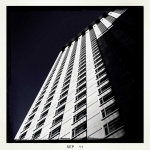
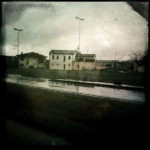


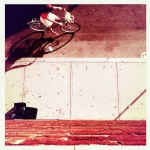


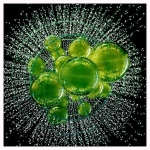
(Note pour les lecteurs francophones: étant seul pour le site et ayant plusieurs projets à terminer dans les prochaines semaines dont des articles sur la prochaine version de Classic, je ne peux traduire cette interview en français. Je m'en excuse évidemment.)
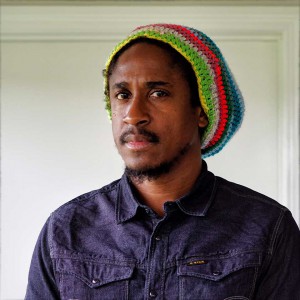 Ruddy Roye is a Jamaican born, New York based photographer and visual storyteller who seeks to provide through his photographs both a voice and a sense of visibility to the disenfranchised and those not readily "seen." This month, Hipstamatic released the Jamaica Pak inspired by Roye.
Ruddy Roye is a Jamaican born, New York based photographer and visual storyteller who seeks to provide through his photographs both a voice and a sense of visibility to the disenfranchised and those not readily "seen." This month, Hipstamatic released the Jamaica Pak inspired by Roye.
Matthew: First of all, congratulations on the new Lens and Pak in your honour! Based upon many of your posts, it seems like Hipstamatic is a go-to camera for you on several occasions. What is it about the app or Oggl that is so conducive to your style, or even the narratives you're conveying with your photographs? Do you have a favourite Hipstamatic combo?
Ruddy: I find the app very easy to work with. I also enjoy the filters that I engage with from the various lens film combinations. They make me feel excited to use them. Before my pak, I enjoyed using the Lowy lens with the DC film and the John S lens with the black and white fine grain film. These combinations made my images feel like the way you would like them represented on the Instagram platform. I have to say the Instagram platform because nowhere else do I introduce a filter to my images.
Matthew: Could you speak about any of your influences, photography-wise or in terms of activism and the arts?
Ruddy: My greatest influences are the men and women who are a part of the Kamoinge Collective and have guided me throughout my New York career. It is through their commitment and diligent activism that inspired me to pick up the mantel and continue the work.
Matthew: Your work seeks to tell, or as you have stated before, "stop the story," of certain people, e.g. the disenfranchised, the oppressed, the other, etc. How has mobile photography played a role in this process? Are you seeking only to document, or is there something more at play in your work?
Ruddy: It's difficult to say. I know for a fact that a number of the stories that I cover on my Instagram became main stream news after it appeared first on my feed. Through documentation, I have been able to help some of the folks I photograph by having people contact me and working with them directly. But change is a slow process and I am committed to doing whatever I can do to assist in the change.
Matthew: With the advent of mobile photography, it seems that more people have a "visual voice" than ever before. In essence, one doesn't have to be a professional photographer or even have an expensive camera to be "heard" anymore. Perhaps even more importantly, we have seen how mobile photography has shone a penetrating light into some very dark corners, e.g. Freddy Gray, Walter Scott, Devin Allen's coverage of Baltimore, and so on. How do you perceive this phenomenon? Is the tool itself changing things?
Ruddy: The tool has done a lot for shedding light on topics that use to be overlooked or discarded as situations that could not have happened, but as I laud the advent of mobile photography as a voice for the invisible, I think it also brings to the forefront work that should have stayed invisible. The lack of craft sometimes dilutes what the art and craft of photography is. Nevertheless, I think you have to take the good with the bad in this case.
Matthew: Of course. And then there is the adverse argument regarding this tool as well, particularly in the art world, and that involves the idea that an influx of images will, in essence, lead to a saturated appreciation of visual images.
Ruddy: I think change will force us to turn another page in the phenomenon that is mobile photography. Of course it is going to be super-saturated, but at the same time, I think it's up to us to evolve and make it something else, something desirable.
Matthew: I'd like to talk about your street portraits. This genre seems so incredibly intimidating to me as an artist. The first roadblock I encounter is. . . "how would I even begin to explain why I want to take this person's photograph?" Much of your work contains street portraits" or captures that I assume you took after speaking with the subject(s)? How do you engage with your subjects? How do you convey to them what it is you're trying to do?
Ruddy: Getting the people you are trying to collaborate with on board is merely an act of making them participants inside the art/story. After I introduce myself, then I convince my collaborator that they are assisting me in opening light to whatever I am photographing that day.
Matthew: Your work brings up a very interesting conversation regarding objectivity and subjectivity in the world of photography. Are there ever moments when you question the stories you are not telling while you are telling the ones that you are?
Ruddy: I questions stories that fail to make the person I am photographing human.
Matthew: Could you share with us a photograph that you have taken in the last 6 months that you are most proud? Why is this special to you?
Ruddy: One story that I am really proud of is the story of Darrell, who I shot in Harlem 3 weeks ago. It is just the way we went from working out how his life declined right into the prison system and then up again into one of the most articulate and honorable human beings I have ever met. I love a good story.
Matthew: What about one you have taken in the last 6 months that you felt was a failure, in whatever sense? Why did it fail?
Ruddy: I don't know if I do failure. I recently photographed a couple in a blazing sun and was haunted by the fact that I could have photographed them better, but the whole thing felt rushed.
Matthew: One of the adjectives many of your followers ascribe to your work is "powerful." Why do you think this is? Do you see your work as "powerful?" If so, "power" in what sense?
Ruddy: I don't know what most people mean by powerful. If I was to make a guess, I would say it is how the story resonates with them. By that, I mean the story itself carries with it an energy or an emotional charge that stirs something within. I do hope that is what people mean because if I can get one person to stir and then move towards helping to make a change, then I am doing something worthwhile.
Matthew: I am curious as to how your experiences as a Jamaican immigrant influenced the narratives you seek to convey in your photographs. Is there a unifying tenet in the narrative that you would like others to see?
Ruddy: As a Jamaican immigrant, I always carry with me my love for community. It is essentially what I try to build in each picture I display on my feed. I want people to see that I am here for community building, for showing my community in a beautiful light, for showing images with grace and integrity.
Matthew: Ruddy, thank you so much for the time. If you will permit, I would like to leave you with Bernard Pivot's famous questionnaire, which is actually a take from a set of questions originally posed by Marcel Proust (one of my favourite authors).
What is your favourite word? Thank you
What is your least favourite word? Invisibility
What inspires you? Beautiful stories, especially that of the underprivileged classes
What robs you of inspiration? Bigotry, racism, and people who think they are better than others
What sound do you love? The sound a smile makes
What sound do you detest? A toddler crying because of hunger
What is your favourite curse word? Suck yu mumma
What profession, other than your own, would you most like to attempt? Ballet
What profession would you least like to attempt? Art Critic
If Heaven exists, what would you like to hear God say when you arrive at the pearly gates? You finally listened.
This post is also available in: Anglais
0 comments